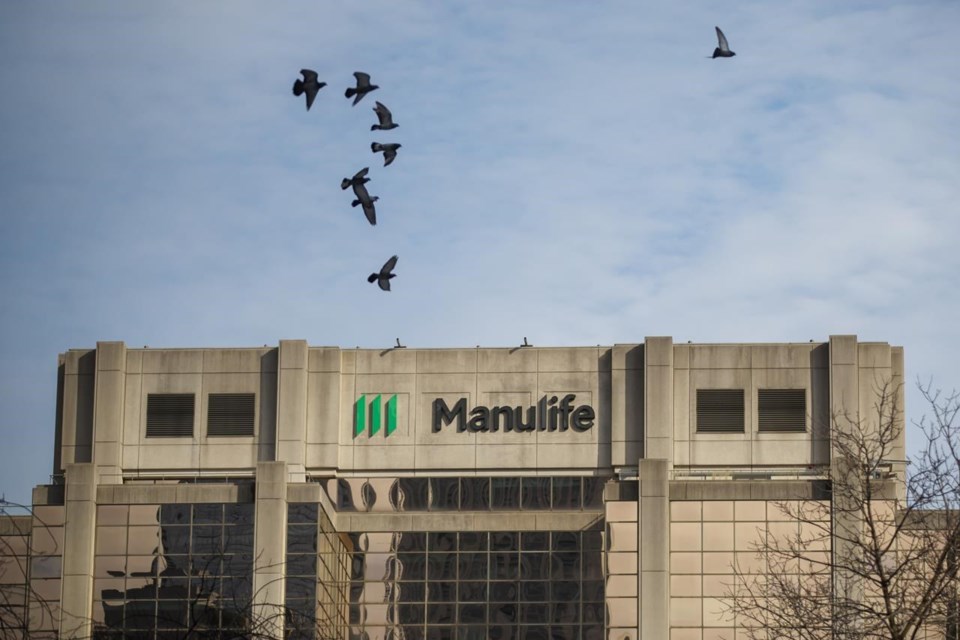TORONTO — Manulife Financial Corp. says it expects to ramp up its share buyback program this year as it sheds lower-growth assets and works to maintain its heightened return on equity.
The company said Thursday it expects to accelerate buybacks from the $200 million it did in the first quarter to around $600 million per quarter for the rest of the year. The repurchases follow the roughly $5.5 billion in buybacks it has carried out over the past five years.
The move comes after a quarter that saw the insurance giant close one major deal to off-load holdings with limited growth potential and announce a second that closed in early April.
The first was a $13-billion reinsurance deal that included what it says was the largest long-term care component the insurance industry had ever seen, while the second was the largest-ever universal life reinsurance deal in Canada.
Reinsurance deals involve shifting the risk of existing insurance policies, and a chunk of their premiums, to another company to free up capital by reducing liabilities.
Manulife chief executive Roy Gori told a conference call to discuss the company's latest results that the deals will mean more money back to shareholders and more growth ahead.
"We will return the $2 billion of capital released from our two recent reinsurance transactions on low ROE (return-on-equity) businesses to shareholders through buybacks. All of these actions support long-term ROE growth."
The increased share buybacks come as the federal government is putting in place a new two per cent tax on share repurchases that will cover transactions as of the start of 2024.
The government said the new tax, which follows a one per cent buyback tax introduced in the U.S., is meant to both raise revenue and encourage companies to reinvest in their workers and businesses.
Company executives didn't mention the tax on the call, but did say they've been investing to make sure sales agents have the digital tools needed to be highly productive.
Manulife's focus on buybacks has help boost its core return-on-equity measure, which neared 16 per cent at the end of 2023 and came in at 16.7 per cent in the first quarter.
The returns are up significantly from the 11 per cent Manulife was at in 2017 as it's worked to shed low-return segments, said Gori.
"We freed up $11 billion worth of capital over the last six years, and that is capital that was being dedicated towards low ROE franchises, and obviously, deploying that capital towards buybacks."
Manulife reported Wednesday after the close of markets that its net income attributed to shareholders for the quarter ending March 31 was $866 million, down from $1.4 billion in the same quarter last year, in part from the accounting effects of the reinsurance deal.
Its core earnings were $1.75 billion, up from $1.53 billion last year.
This report by The Canadian Press was first published May 9, 2024.
Companies in this story: (TSX:MFC)
Ian Bickis, The Canadian Press

